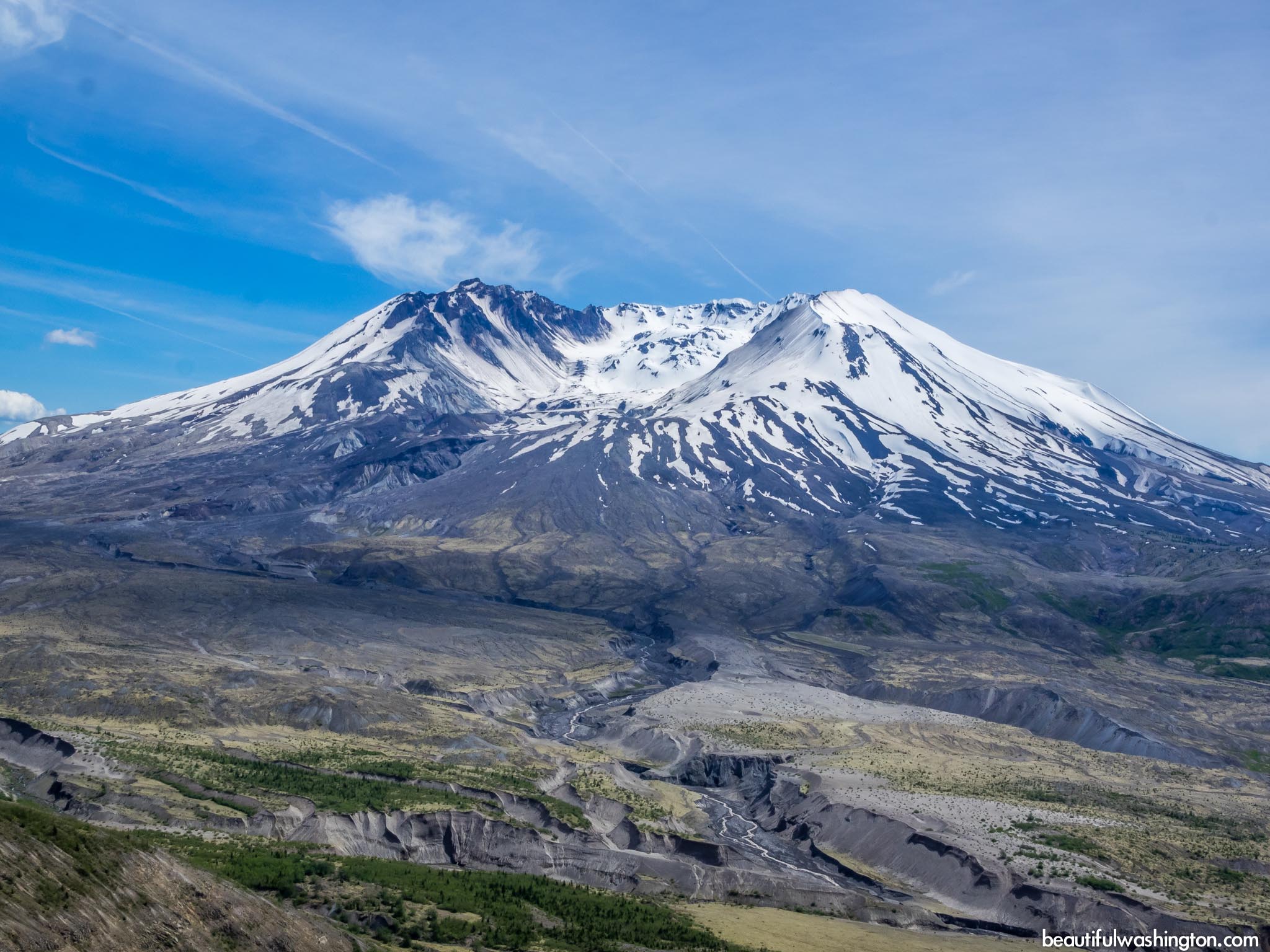
Yes, the area is still volcanically active.Īnyway, we weren't here just to visit the observatory. that's how much rock came rushing down the mountain as part of the eruption.Īlso, all the clouds you see inside the crater are steam. The whole mountain used to be 1300' taller than the rim of the crater. It's hard to understand scale in this photo, but those domes are 800' high. They formed at different times since the 1980 eruption. There are not one but two lava domes inside it. Here's a zoomed-in shot of the inside of the crater (above). This one is fed by melt from a glacier that formed in the crater after the eruption. At this time of year many streams run dry. One of many things that's interesting in this scene is the river flowing down from the volcano. Scientists today are able to predict with much greater accuracy when and how other volcanoes will erupt, helping improve the safety of people who live nearby. Helens contributed greatly to our understanding of volcanic eruptions. And b) the field work of brave scientists like Johnston at Mount St. Such was the force of the eruption that the top of this ridge was scoured bare. Some people might sneer at Johnston's death as, "If he's such a smart scientist, why was he standing on a volcano that was about to erupt?" Understand that a) this spot is 4 miles away from the center of the crater and up a mountain. The observatory was built in 1997 near the camp of volcanologist David Johnston, one of several scientists who perished in the explosion. From this spot you see the northwest face of the mountain, the area where it blew open in a violent eruption in 1980.

Helens from the Johnston Ridge Observatory. Our planning paid off with beautiful, clear weather most of the day. Sunday this past weekend was the clearest looking day in the weather forecasts for our three day trip, so we chose it for a visit. The mountain was all socked in with clouds. But until today we'd never visited the main part of the park, the Johnston Ridge Observatory. Years ago we visited Lava Canyon and its waterfalls on the south side. Four weeks ago we visited Windy Ridge, on the east side. We've been to the park a few times before, but in different areas. Sunday morning we drove from our hotel in Vancouver, WA to Mount St. Helens reawakened in March 1980, Dave Johnston was one of the first geologists on the volcano.Mount St. Thus, it was natural that, when Mount St.


A specific objective of such monitoring is to test whether or not changes in gas geochemistry might provide precursory clues of impending eruptive activity. Geological Survey in 1978, where he was assigned to expand the program for monitoring volcanic emissions in Alaska and the Cascade Range. His work on volcanic gases brought him to the U.S. at the University of Washington, Dave increasingly focused on the fundamental role of gases, or volatiles, in volcanic processes as he continued his studies on Augustine and began work on Katmai Volcano, Alaska. The Augustine study was the basis for his doctoral dissertation, completed in 1978 at the University of Washington, Seattle.įollowing completion of his Ph.D. This interest in volcanic phenomena intensified with subsequent work in the San Juan volcanic field of southwestern Colorado and on Augustine Volcano in lower Cook Inlet, Alaska. His strong interest in volcanism began with his first geologic project studying Precambrian volcanic rocks in the Upper Peninsula of Michigan.

Helens prior to catastrophic collapse and eruption.īorn and raised in Illinois, Dave Johnston graduated in 1971 from the University of Illinois, Urbana, with "Highest Honors and Distinction" in geology. USGS geologist, David Johnston, enters small crater at summit of Mount St. The volcano-monitoring effort of which Dave was part helped persuade the authorities first to limit access to the area around the volcano, and then to resist heavy pressure to reopen it, thereby holding the May 18 death toll to a few tens instead of hundreds or thousands. At the same time, he repeatedly voiced the conviction that adequate hazard evaluations require accepting the dangers of on-site monitoring of active volcanic processes. From his experience with active Alaskan volcanoes, Dave understood better than most the hazards of explosive volcanism. Ironically, he was caught at an observation post that was considered relatively safe. Helens, and the scientist in charge of volcanic-gas studies, Dave spent long hours working on and close to the mountain. Geological Survey monitoring team to arrive at Mount St. Coldwater II would eventually be re-named "Johnston Ridge" in honor of Dave.Īs one of the first members of the U.S. Dave did not survive the next day's eruption. David Johnston at Coldwater II, 1900 hours, May 17, 1980.


 0 kommentar(er)
0 kommentar(er)
